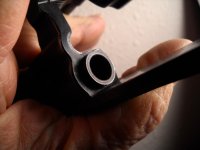Imagine the reaction if someone were to say "I bought a 22lr rifle but I only shoot 22 shorts in it because I don't want to unduly stress the design!"?
Face it: the average owner of any 357 Magnum firearm will never shoot enough of the reputed (so-called, rumored, allegedly, etc.) "dangerous factory loadings" to make a difference. No doubt there are "some" who may experience the reported problems with K-frame 357 Magnums: to what extent did their exposure exceed the normal (average, typical, etc.) owner's? How many more thousands of rounds (of all varieties) of ammo did they shoot?
Is a L-frame even enough: shouldn't they all be N-frames, just to be "sure"...?
Just IMHO.
Cheers!


